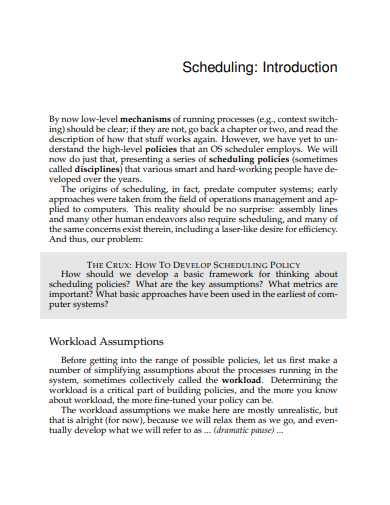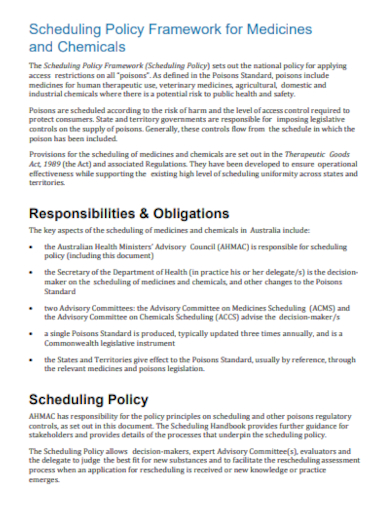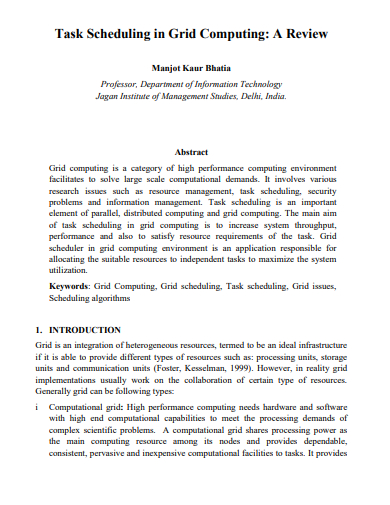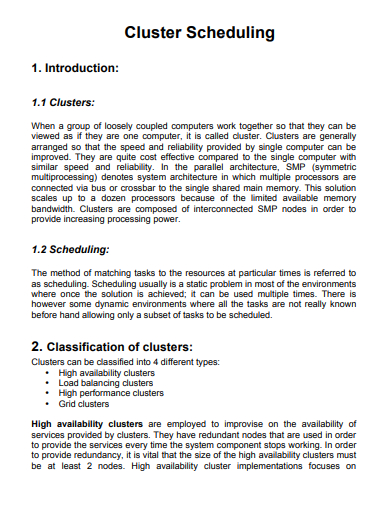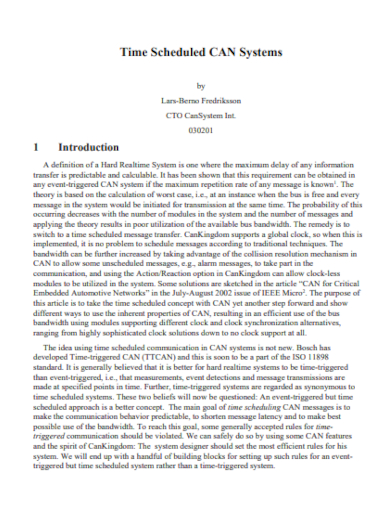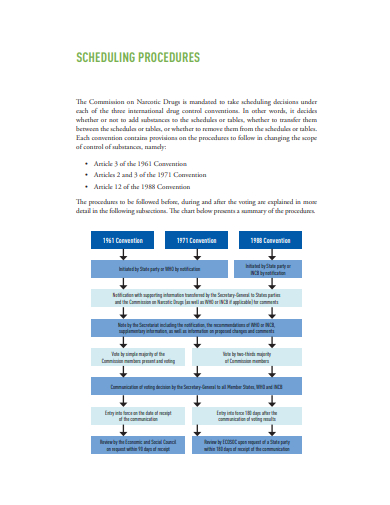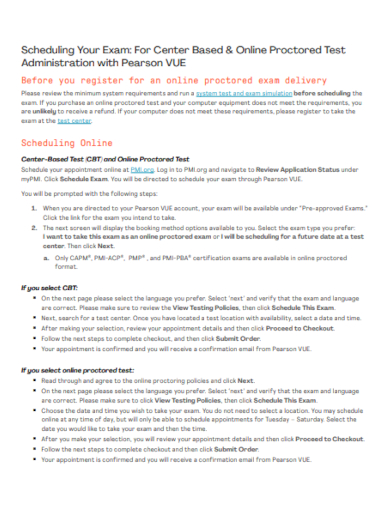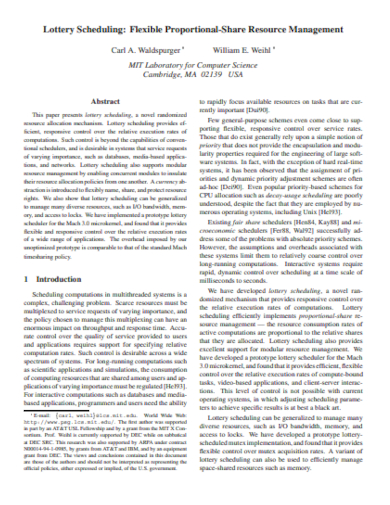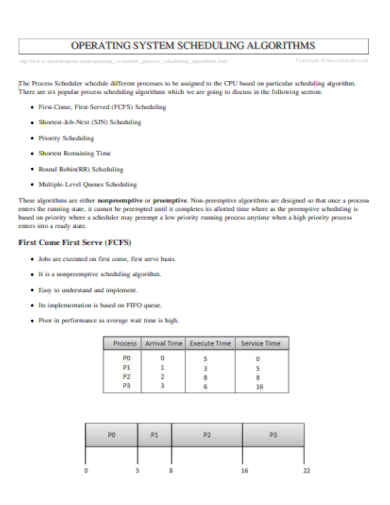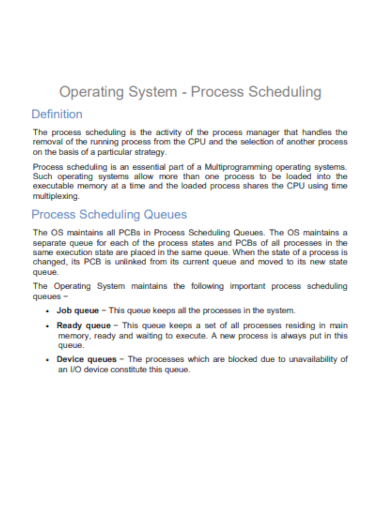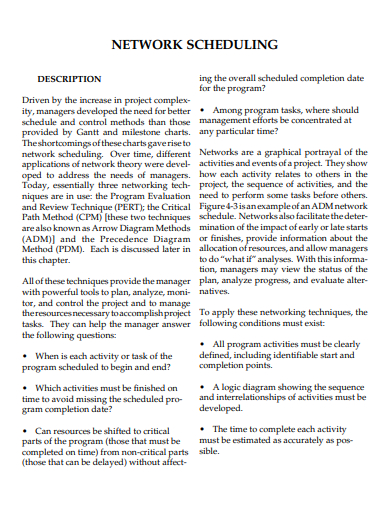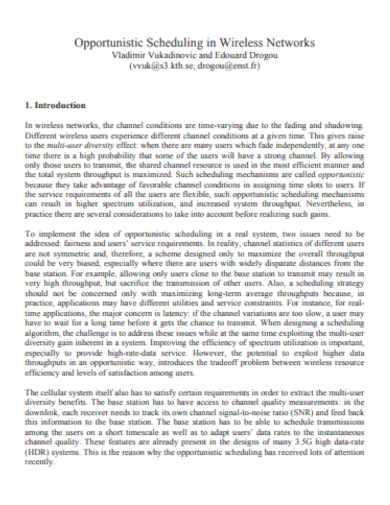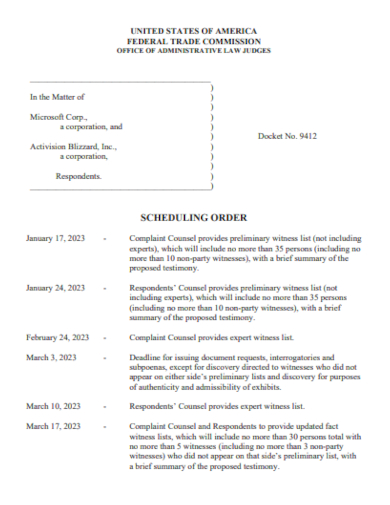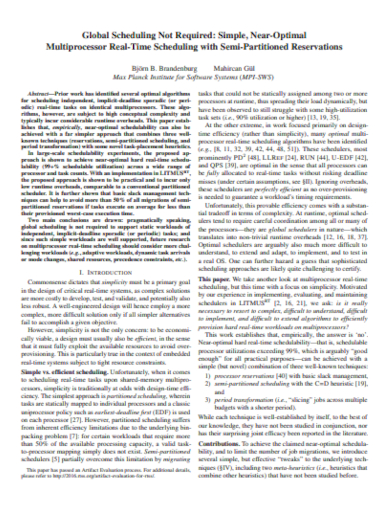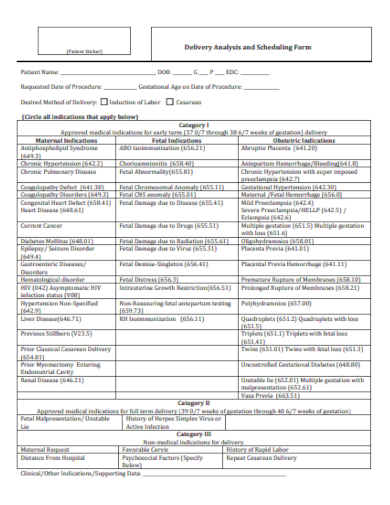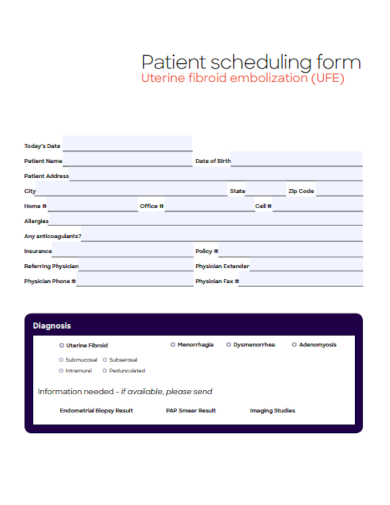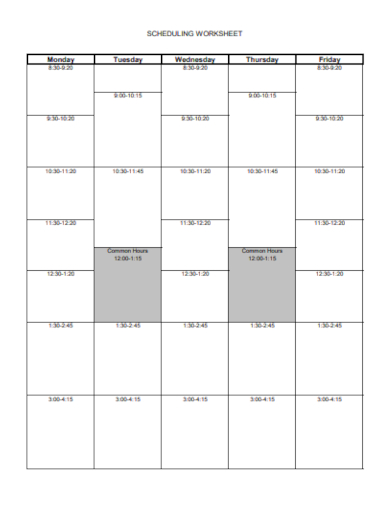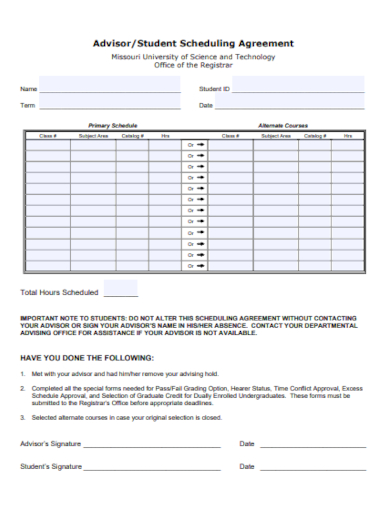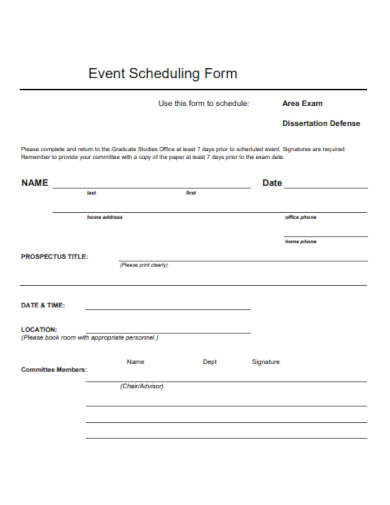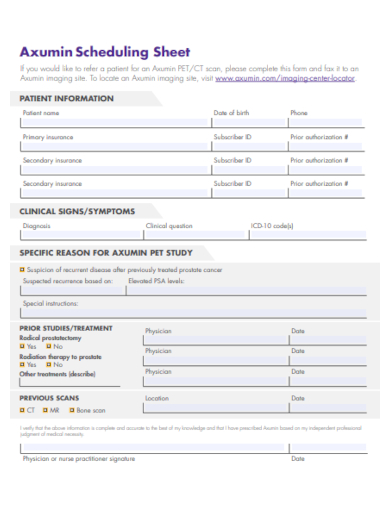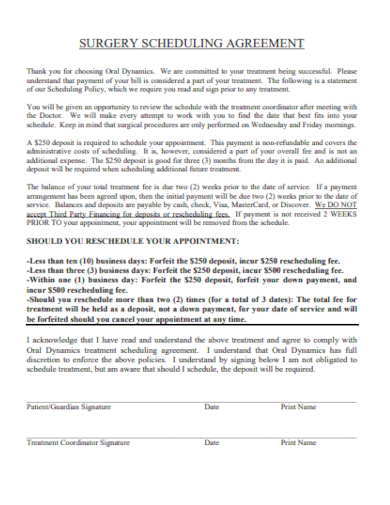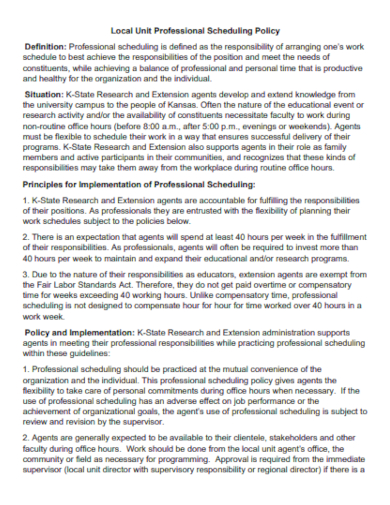Completion of projects is an essential method to establish value which every company or organization must execute. Regardless of a project’s scope of work, a project schedule provides guidance on when every activity or task must be completed, what was already accomplished, and the appropriate sequence in that every task needs to be completed. Schedule management is part of a company’s project management which lists its activities, deliverables, and milestones.
30+ Scheduling Samples
1. Scheduling Management Gantt Chart Template
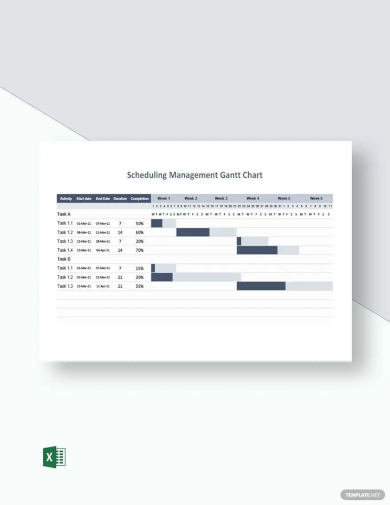
2. Scheduling Calendar Template
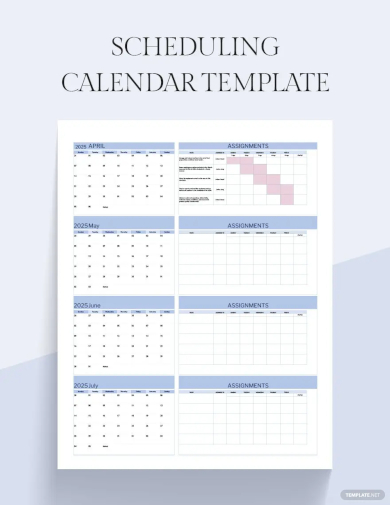
3. Employee Scheduling Flowchart Template
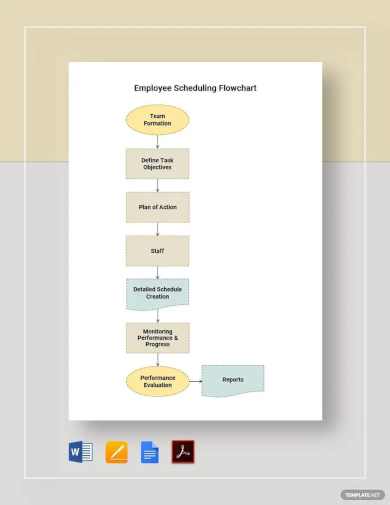
4. Construction Crew Scheduling
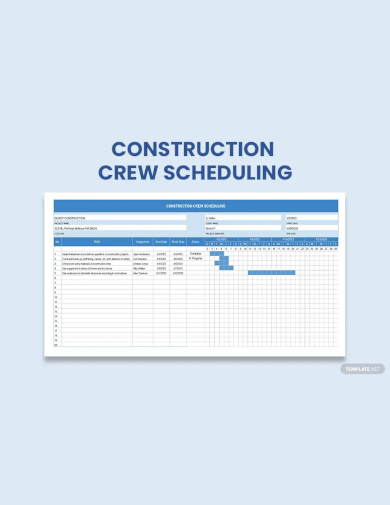
5. Work Scheduling
6. Data Process Scheduling
7. Scheduling Policy
8. Task Scheduling
9. Cluster Scheduling
10. Time Scheduling
11. Scheduling Procedure
12. Interview Scheduling
13. Management Scheduling
14. Operating System Scheduling
15. Analysis of CPU Scheduling
16. Operating System Process Scheduling
17. Network Scheduling
18. Wireless Network Scheduling
19. Scheduling Order
20. Maintenance Scheduling
21. Delivery Analysis Scheduling Form
22. Patient Scheduling Form
23. Scheduling Worksheet
24. Student Scheduling Worksheet
25. Scheduling Agreement
26. Advisor Scheduling Agreement
27. Event Scheduling Form
28. Healthcare Scheduling Sheet
29. Scheduling Activities Worksheet
30. Surgery Scheduling Agreement
31. Professional Scheduling Policy
What is Scheduling?
Scheduling refers to the process used to provide a timetable that contains all tasks or activities which a company must perform to accomplish and complete a project, portfolio, or program. It is a type of document that was developed and maintained during the entire lifecycle of a project. A schedule shows the forecast start and end dates for a certain activity or event, its duration, and the resources required and assigned to every activity or event. Other project management tools or templates you can use include knowledge management, operations management, inventory management, project scope management, resource management, and cost management plans.
How to Create Scheduling?
Once a project manager has defined the project’s scope of work, its quality requirements, and risks as well as has estimated the duration of the project, they can now plan and outline their schedule. Schedules are created based on various aspects of the project or activity which is also an essential factor in ensuring an effective communication roadmap among the entire team and stakeholders.
Step 1: Define Your Activities or Projects
Start by providing a definition of your activities to enable project managers to utilize the Work Breakdown Structure and a diagram for its deliverables to create and begin the tasks necessary to finish the activity on time.
Step 2: Organize the Sequence of the Activities Then Perform Estimates
Arranging the sequence of activities will help you in identifying the connection between your project activities. Then, choose the time utilization to accomplish the project. Perform an estimation on what tasks to do, the proper process to do it, and the time it should take to complete.
Step 3: Determine Your Project’s Dependencies
Make sure to determine your task dependencies which refer to tasks that must be completed before proceeding to the next task. Include these tasks in your schedule and monitor them to ensure the completion of your project.
Step 4: Identify and Assign Your Resources
Identify the necessary resources you need and assign them accordingly to finish your schedule management plan. Having the right resources and the time they will be used will be one of the factors you must consider to plan your schedule.
FAQs
What are the advantages of schedule management?
Schedule management provides you with a structured project work schedule, allows you to share the schedule management plan with your team, gather data for reporting, define the interdependencies between your tasks, visualize complex tasks, understand the project’s work progress, and increase the possibility of achieving the project objectives.
What does the process for time management include?
The process of time management involves planning schedule management, defining the project activities, sequencing the activities, estimating the resources and durations, and developing the project schedule.
What are the tips for creating an effective project schedule?
To create an effective project schedule, make sure to get feedback from your stakeholders, use past projects as your reference, keep possible risks in mind, consider possible non-work time, define the critical path on your project, document scheduling assumptions, and include your project milestones.
Scheduling or schedule management is the method of describing a particular project task, its durations, dependencies, and assigned resources to ensure the accomplishment of the said project within the forecasted time frame. This process also involves monitoring and reporting on the schedule to make sure that the project is delivered on time. Scheduling also involves the establishment of company policies and documentation to maintain, develop, manage, and control schedules for the time and resources necessary to complete the project.
Related Posts
FREE 10+ Schedule of Value Samples in MS Word | Google Docs | Pages | PDF
FREE 50+ Blank Schedule Samples in MS Word | Google Docs | Pages | PDF
FREE 10+ Employees Schedule Samples in PDF
FREE 10+ On Call Schedule Samples in PDF
FREE 10+ Time Block Schedule Samples in PDF
FREE 10+ Gym Schedule Samples in PDF | MS Word | Apple Pages | Google Docs | Keynote |
FREE 10+ Daily Hourly Schedule Samples in PDF
FREE 10+ Weekly Schedule Template with Hours Samples in PDF
FREE 10+ 7 Day Weekly Schedule Samples in PDF
FREE 10+ Working Schedule Template Samples in PDF
FREE 6+ Preschool Schedule Template Samples in PDF
FREE 10+ Day Schedule Samples in PDF
FREE 10+ Daily Work Schedule Samples in PDF
FREE 10+ Baseball Schedule Samples in PDF
FREE 10+ Availability Schedule Samples in PDF

